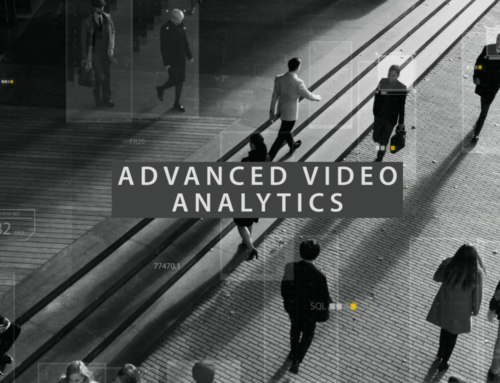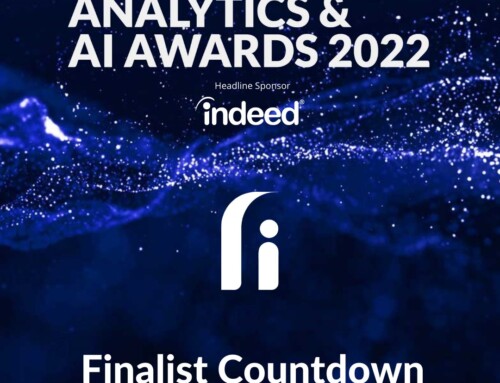The importance of the audit chain for video evidence
If you are using video in a court of law, it is necessary to ensure that you are using the right processes and techniques to analyse and report on that video. There is a large checklist of areas for consideration. For example, how you retrieve or collect video sources, how you securely store video and train your staff. It is not a topic that can be looked at in one blog post, so this post looks at some of the key video investigation steps against the background of hot industry trends like ISO17025, deep learning algorithms, General Data Protection Regulation GDPR and digital asset management.
ISO 17025
It is expected that practitioners carrying out the recovery, preservation, production and analysis of video material should be accredited to BS EN ISO/IEC17025:2005. In 2014 the UK Forensic Regulator, published the ‘Codes of Practice and Conduct. Appendix: Digital Forensic-Video Analysis’
Overall, the basic premise is that if you are processing video your practices and processes need to be repeatable and reliable. The aim of the code is to ensure good working practices for video analysis focusing on how to disclose or ensure that the process will meet audit requirements or practices. So essentially, investigators must work in a structured way to facilitate the processing of video data and the training of staff. Of course, technology can greatly help with this. To this end, the Kinesense solution encompasses a host of tools enabling practitioners to select their analysis methods, validate and report quickly and easily.
Kinesense provides one unified platform for video analysis, from capture to court. Instead of using a lot of different software packages, with Kinesense all video analysis tools are combined in one. Not only is this convenient, it is important for preservation of the chain of evidence. The Kinesense solution has been designed to be compliant with ISO 17025 codes of practice. If you are interested in learning more on this, get in touch for a demonstration.
However, the focus of this article is to look at some of the issues in relation to hot topics in the industry against the background of video evidence best practice.
Video Retrieval & Collection
The Forensic Regulators code covers everything from the capture to court. It does not include recuperation or scene retrieval processes (although this is largely covered by the Home Office publication ‘Retrieval of Video Evidence and Production of Working Copies from Digital CCTV Systems‘) So if you are collecting video, it is a good starting point to read this or other Home office guides.
Once you have a video file though, you still need to open it to review it. There are long standing issues surrounding proprietary formats (covered in Dr. Mark Sugrue’s article ‘ The CCTV File Format Minefield’. The majority of CCTV files are not encoded in standard video formats and thus are not playable on every computer. This causes massive delays and costs to the courts and the entire criminal justice system. Some believe that you should not convert but the reality is that if you want to show the file in court, you must convert it in many cases. The key is to make sure you keep a master copy and working copy and adhering to best practice. Importantly, you need to ensure that you convert in an evidential manner. Converting from proprietary file formats can carry risks of dropped frames, particularly in cases where third party manufacturer has produced multiple different format versions, or is no longer supporting the format. We have seen some formats which drop frames on certain computers, or where there is a file format version mismatch. You should also be aware of compression and the loss of information.
As new surveillance and DVR systems are developed they are adhering more and more to standards like ONVIF. However, ONVIF doesn’t yet cover the encoding of stored video or provide a standard file format and we are still seeing proprietary formats and heavy compression being used in the industry.
Video analysis
Video analytics are a very useful tool in speeding up video review to find key events. It is a technology that has been recognised by the UK courts as a good use of time (e.g. Ponoka R v Williams, 2016) yet is not extensively used in law enforcement. Its important to note that the code of practice outlines, “The basis for tracking objects or people (either manually or automatically) shall be documented with risks identified and mitigated”
Kinesense take a multifaceted approach to this. Firstly, our algorithms are designed to work with low quality video and optimised for detection. Secondly, our deployment guide outlines to users’ key issues affecting performance and deployment recommendations. Thirdly, test videos are provided to enable the user to test the performance of the software. Lastly, when the quality of the video is too low for event detection to be reliable the user is alerted with a warning message.
The difference between a video analytic used for analysing evidence and one used for general usage, is important. If evidence is being processed every frame must be recorded and kept. Furthermore, the technique used must be available, repeatable and reliable.
Deep learning and Artificial Intelligence algorithms are an exciting new technology in the video analytics space but the issue with deep learning is that the algorithms infer or learn over time. The result is a ‘black box’, meaning that results are not necessarily repeatable and how the algorithm works is opaque even to the engineers who created it.
Video reporting
Any transformation that takes place needs to be available and accessible at all stages of a video investigation. Key reporting functions include selecting images and clips, story-boarding them and making exports. An increasingly important trend is redaction of sensitive personal information in video. This is becoming more and more important in light of GDPR regulations.
Kinesense takes a multifaceted approach to ensure that the evidential chain is proved at all stages. Every frame is hashed, and all user actions recorded. One of the nice features of Kinesense is that this information is available at every stage of the video analysis process at the touch of a button. At the end of an investigation, you can quickly and easily print to export a full disclosure report detailing all steps undertaken.
As video sources proliferate and as video becomes more important in helping in a court of law, keep in mind that you are processing evidence.








 [/one_third][two_third last=”yes” spacing=”yes” center_content=”no” hide_on_mobile=”no” background_color=”” background_image=”” background_repeat=”no-repeat” background_position=”left top” border_position=”all” border_size=”0px” border_color=”” border_style=”” padding=”” margin_top=”” margin_bottom=”” animation_type=”” animation_direction=”” animation_speed=”0.1″ class=”” id=””]
[/one_third][two_third last=”yes” spacing=”yes” center_content=”no” hide_on_mobile=”no” background_color=”” background_image=”” background_repeat=”no-repeat” background_position=”left top” border_position=”all” border_size=”0px” border_color=”” border_style=”” padding=”” margin_top=”” margin_bottom=”” animation_type=”” animation_direction=”” animation_speed=”0.1″ class=”” id=””]